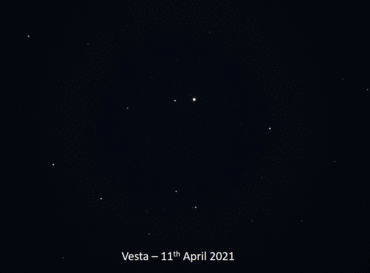Vesta is one of the most intriguing and significant celestial bodies in our solar system. It is an asteroid and the second-largest object in the asteroid belt, located between the orbits of Mars and Jupiter. Named after the ancient Roman goddess of hearth and home, Vesta has captivated the curiosity of astronomers and space enthusiasts alike.
Discovered by Heinrich Wilhelm Olbers on March 29, 1807, Vesta has a rocky and irregular shape, resembling a protoplanet or a small terrestrial planet. Its diameter is approximately 525 kilometers, making it the second-largest asteroid after Ceres. Vesta's surface is heavily cratered, indicating a history of intense impacts over its long existence.
One of the most remarkable features of Vesta is its large impact crater, named Rheasilvia, which measures about 500 kilometers in diameter. This colossal crater is believed to have formed from an impact event that occurred billions of years ago, causing significant disruptions to Vesta's surface and leading to the creation of a central peak that rises several kilometers high.
Studies of Vesta have provided valuable insights into the early stages of our solar system's formation. Scientists believe that Vesta is a protoplanet, a remnant of the building blocks that eventually formed the terrestrial planets like Earth. By studying its composition and geology, researchers have gained a better understanding of the processes involved in the formation and evolution of rocky bodies in our solar system.
In 2011, NASA's Dawn spacecraft embarked on an ambitious mission to study Vesta up close. During its year-long stay, Dawn captured detailed images of Vesta's surface, revealing its complex topography, diverse geological features, and variations in composition. The mission provided scientists with invaluable data to further unravel the mysteries of Vesta's origin and evolution.
Vesta's significance extends beyond scientific exploration. Its abundance of minerals, particularly metallic ores, has made it an object of interest for potential future space mining endeavors. Studying Vesta's resources could help advance our understanding of asteroid mining and its potential applications for space exploration and resource utilization.
As we continue to explore and learn more about Vesta, this enigmatic asteroid continues to shed light on the fascinating history and dynamics of our solar system. Its geological diversity, ancient impacts, and intriguing composition make it a captivating subject of study, inspiring further research and unlocking the secrets of our cosmic neighborhood.
While capturing detailed surface images of Vesta with amateur telescopes may be challenging, we can still observe its movement in the night sky. This was precisely what we did, as depicted in the animated gif below. By comparing two photographs, one taken on April 11th, 2021, and the other on April 12th, 2021, we can clearly discern the noticeable shift in Vesta's position during this time span.

Post a comment
| Date | Name | Comment |
|---|